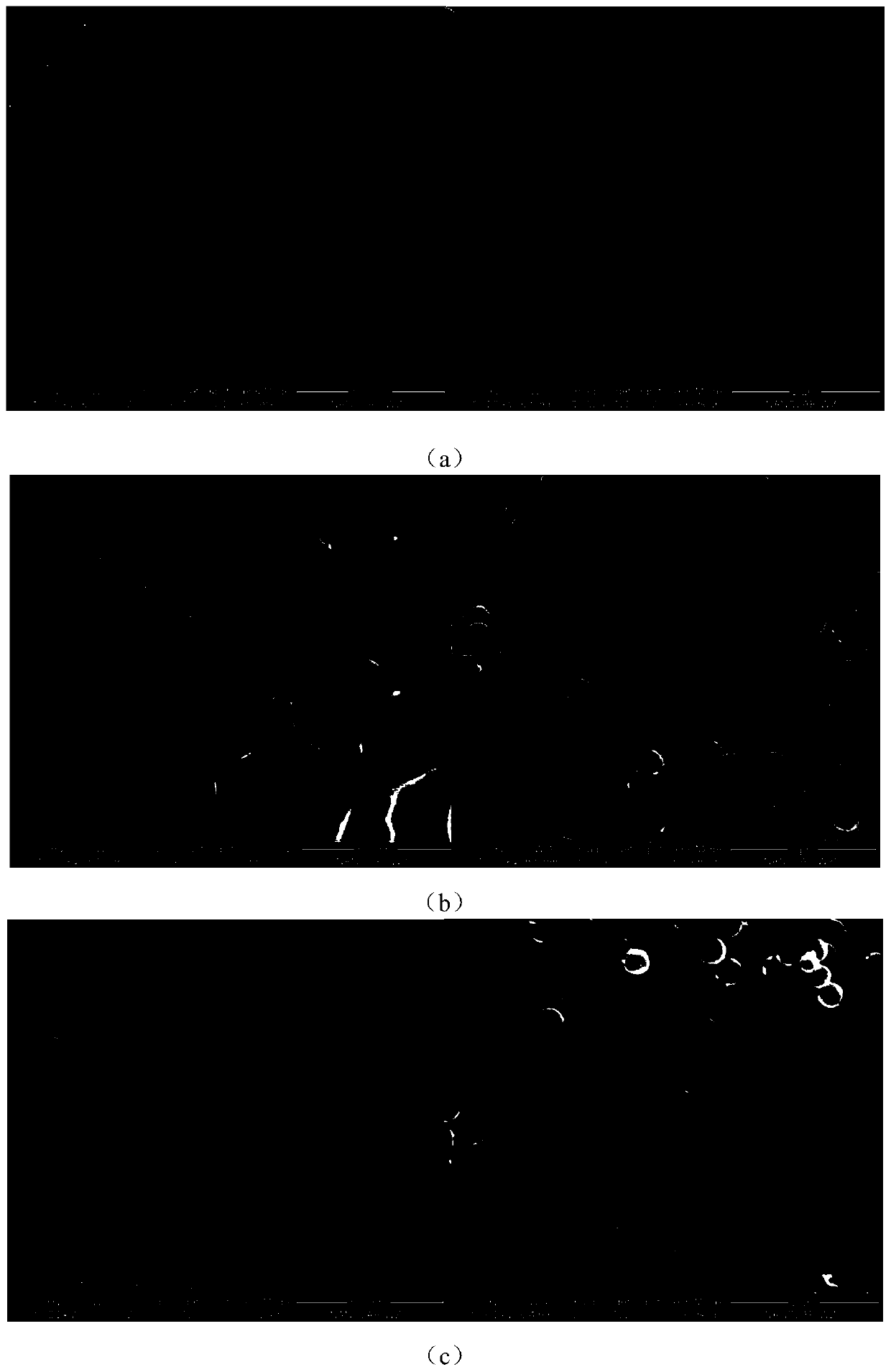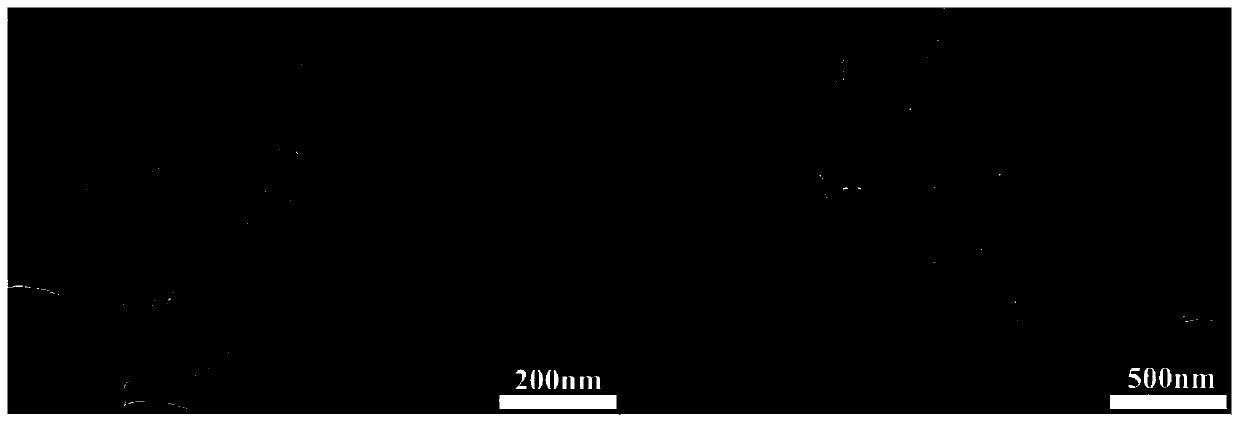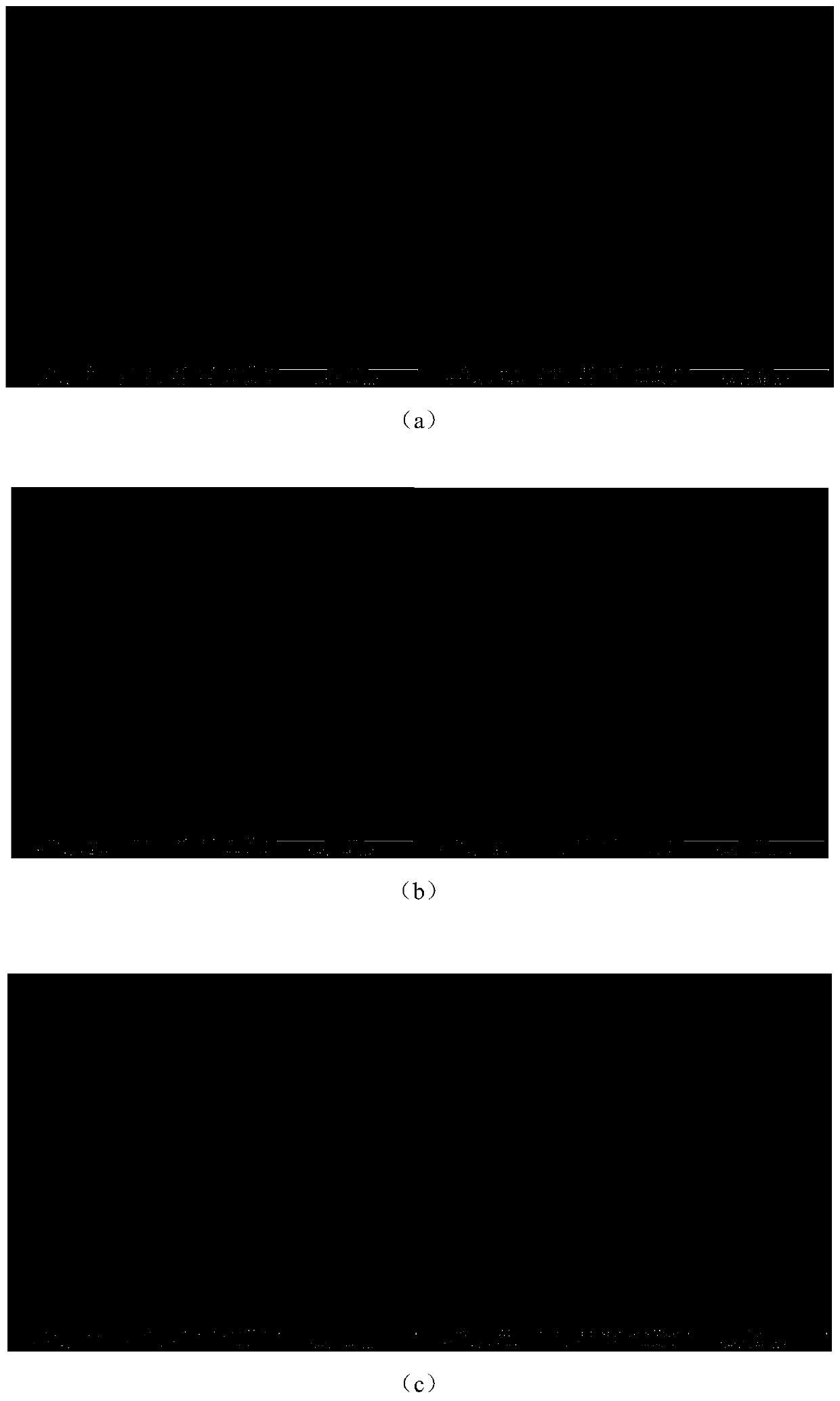Nitrogen-doped barbed carbon nanosphere/sulfur composite material and preparation method and application thereof
A technology of carbon nanospheres and composite materials, applied in the fields of nanomaterials and electrochemical energy, can solve the problem that it is impossible to determine whether sulfur is outside or inside the hollow sphere, the conductivity of sulfur cannot be greatly improved, and the utilization of active materials can be reduced. rate and other problems, to achieve the effect of low cost of raw materials and equipment, enhanced physical adsorption, and improved electrical activity
- Summary
- Abstract
- Description
- Claims
- Application Information
AI Technical Summary
Problems solved by technology
Method used
Image
Examples
Embodiment 1
[0034] Step 1, preparation of silica nanospheres:
[0035] Weigh 2g of hexadecyl bromide pyridine and 1.2g of urea, mix and dissolve in 60mL of water, and take 5g of tetraethyl orthosilicate, dissolve in a mixed solution of 60mL of cyclohexane and 3mL of n-pentanol, and stir at room temperature 60 minutes, transferred to a reaction kettle, reacted at 120°C for 6 hours, cooled, filtered, washed to obtain a white solid, dried, transferred to a muffle furnace for roasting, and obtained white silica nanospheres.
[0036] Step 2, preparation of nitrogen-doped barbed carbon nanospheres:
[0037] Weigh 4g of glucose and 0.5g of the above-prepared silica nanospheres, mix them, stir and dissolve in 75ml of aqueous solution, then transfer to a 100ml polytetrafluoroethylene hydrothermal reaction kettle, heat and keep at 180°C for 12h, after cooling , filtered, washed with water and ethanol successively, dried, Ar and NH 3 Heat treatment at 800°C for 2 hours at a ratio of 9:1, the obtai...
Embodiment 2
[0048] Take 0.08 g of the nitrogen-doped barbed carbon nanosphere (NCS) sample prepared in step 2 of Example 1, mix with 0.24 g of sulfur powder, seal it, place it in an oven at 165° C. for heating, and take it out after cooling for 12 hours to obtain nitrogen Doped barbed carbon nanospheres / sulfur composites (370nm-CNS / S74%-1:8). According to the method in step 4, prepare electrodes and assemble batteries, and perform routine performance tests, the current density is 0.2C, and the specific capacity of the second cycle discharge is 1087mAh g -1 .
[0049] Summary: The variables in Example 1 and Example 2 are the proportion of sulfur in the composite material, which are 60wt% and 74wt% respectively, the sulfur content of 60% is lower than that of 74%, and the discharge capacity at 1C rate (calculated based on sulfur mass ) is slightly improved, and the remaining capacity of the battery is 413mAh g after 1000 cycles -1 , The Coulombic efficiency of the battery can reach 96%. ...
Embodiment 3
[0051] Using 3.5 g of glucose and 0.5 g of silica nanospheres prepared in step 1 as raw materials, according to the synthesis method of nitrogen-doped barb-shaped carbon nanosphere / sulfur composite material in step 2 and step 3, obtain nitrogen-doped barb carbon nanosphere / sulfur composite (370nm-CNS / S-1:7). According to the method in step 4, prepare the electrodes and assemble the battery, and perform routine performance tests. The initial discharge specific capacity under 1C current is 665mAh g -1 , the capacity remains at 211mAh g after 600 cycles -1 .
PUM
| Property | Measurement | Unit |
|---|---|---|
| size | aaaaa | aaaaa |
| length | aaaaa | aaaaa |
| pore size | aaaaa | aaaaa |
Abstract
Description
Claims
Application Information
 Login to View More
Login to View More - R&D
- Intellectual Property
- Life Sciences
- Materials
- Tech Scout
- Unparalleled Data Quality
- Higher Quality Content
- 60% Fewer Hallucinations
Browse by: Latest US Patents, China's latest patents, Technical Efficacy Thesaurus, Application Domain, Technology Topic, Popular Technical Reports.
© 2025 PatSnap. All rights reserved.Legal|Privacy policy|Modern Slavery Act Transparency Statement|Sitemap|About US| Contact US: help@patsnap.com



